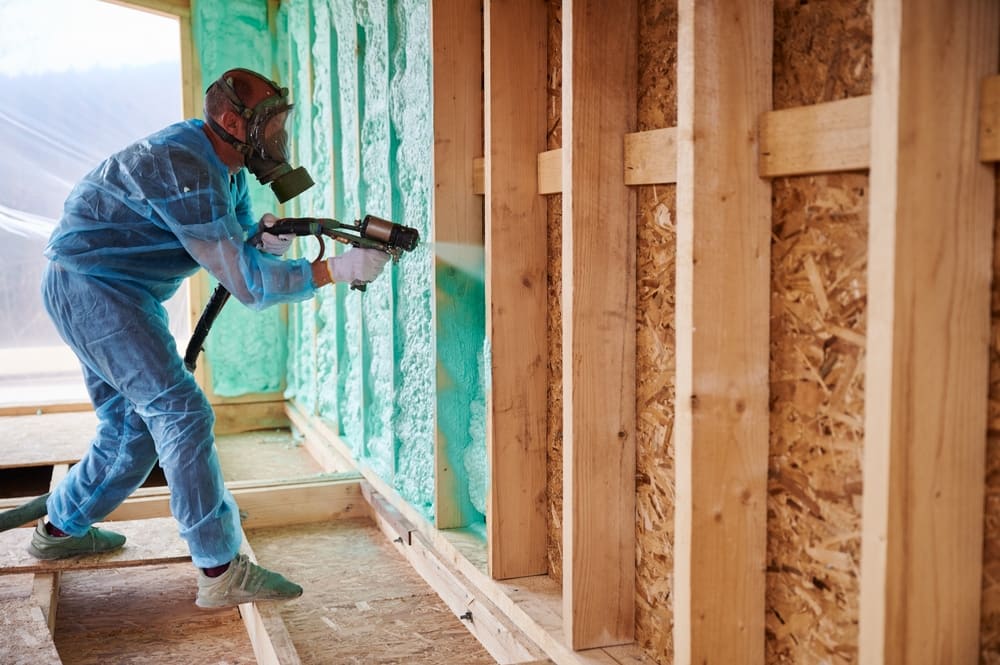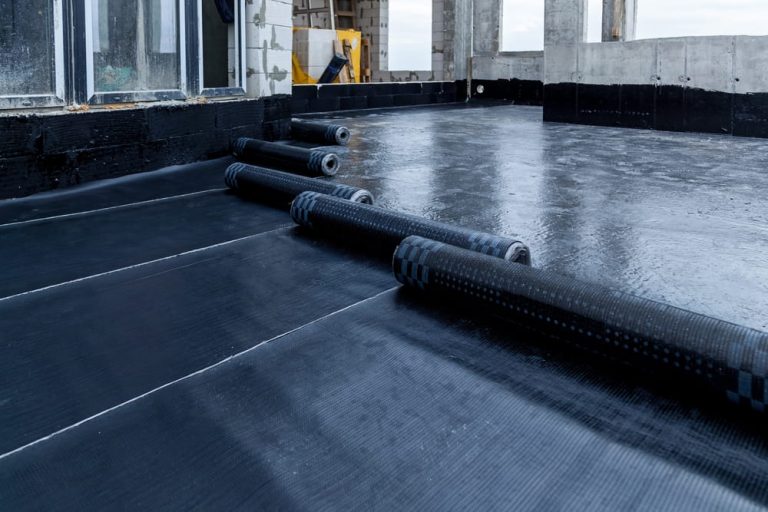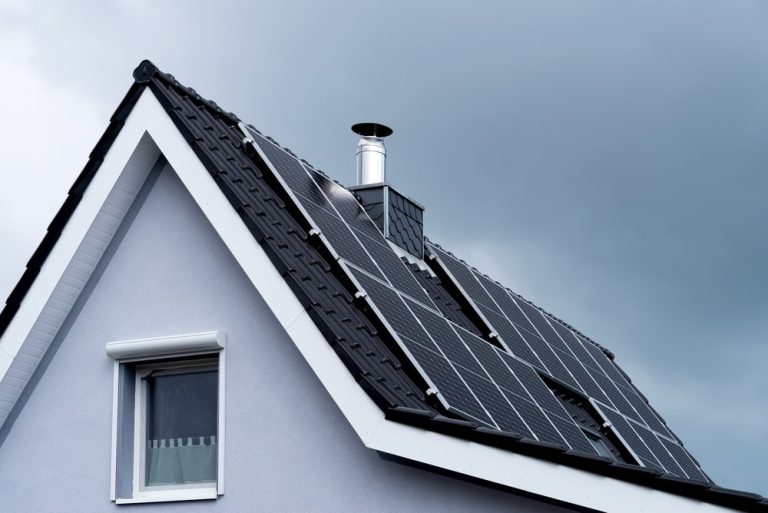Spray foam insulation is a material used for building insulation that consists of two chemical components that expand and harden upon mixing. These two components, commonly referred to as “A” and “B”, include polyol resin and isocyanate. When these chemicals are combined, they react to create polyurethane foam, a substance with powerful insulative properties. This foam expands dramatically upon application, filling nooks and crannies, providing airtight seals, and significantly improving a building’s energy efficiency.
The effectiveness of spray foam insulation derives from its ability to seal leaks and gaps, preventing air movement, which can compromise the thermal envelope of a structure. By creating a continuous barrier, it contributes to the maintenance of a consistent indoor temperature, thereby reducing the demand on heating and cooling systems. Spray foam comes in two primary forms: open-cell and closed-cell, differentiated by the structure of the foam cells. Open-cell foam is softer and more flexible, with a lower R-value per inch, while closed-cell foam is denser and provides a higher R-value, contributing to greater thermal resistance and strength.
Once applied, spray foam insulation’s longevity and durability make it a long-term solution for energy conservation. Its resistance to heat transfer is not only beneficial for reducing energy costs but also for enhancing indoor comfort and air quality by minimizing drafts and outdoor pollutants. Furthermore, due to its comprehensive coverage and stable nature, spray foam aids in reducing noise pollution, creating a quieter, more serene living environment.
Understanding Spray Foam Insulation
Spray foam insulation has revolutionized the way buildings are insulated, offering enhanced energy efficiency and performance. This type of insulation is a product that expands and hardens upon application, sealing gaps and insulating effectively.
Definition and Composition
Spray foam insulation comprises two main types: open-cell and closed-cell, both fashioned from polyurethane foam. The open-cell foam is softer and more flexible, whereas closed-cell foam is denser and more rigid. Icynene spray foam, a well-known brand, typically embodies the open-cell structure which is air-permeable. Polyurethane foam consists of two materials—polyol resin and isocyanate—that react when mixed, expanding to fill cavities in walls, ceilings, and floors.
Mechanism of Action
When applied, spray foam insulation expands to fill the nooks and crannies, creating a continuous thermal barrier. This expansion and hardening process seals air leaks and creates a moisture barrier, which adds to the insulation’s effectiveness. Energy efficiency is improved as this seamless layer minimizes heat exchange between the interior and exterior of a building.
Advantages Over Traditional Insulation
Compared to traditional insulation methods like fiberglass or cellulose, spray foam provides several clear advantages:
- Enhanced Energy Efficiency: By creating an air-tight seal, it greatly reduces air infiltration, leading to significant energy savings.
- Better Fit: It can insulate hard-to-reach areas, providing a custom-fit solution for irregularly shaped spaces.
- Longevity: Resistant to sagging and settling, spray foam maintains its insulating properties over time, often outlasting other types of roof insulation.
- Moisture Control: Acts as a barrier to water and moisture, reducing the risk of mold and mildew growth.
By comprehensively sealing a building’s envelope, spray foam insulation supports in maintaining a consistent indoor temperature, contributing to a comfortable living or working environment while cutting down on energy consumption.
Types and Materials
Spray foam insulation is a chemical product created by mixing and reacting unique liquid components that form an expansive foam. This foam is widely used in building construction to provide thermal insulation and minimize air infiltration.
Various Spray Foam Forms
Spray foam insulation can be categorized into two main types, each with distinct properties:
- Open-Cell Foam: This type features a softer and more flexible structure. The cells of the foam are not completely closed, allowing for a more breathable material that is excellent for sound dampening. It’s less dense and has a lower R-value per inch.
- Closed-Cell Foam: With a more compact and rigid structure, closed-cell foam has cells that are completely closed. The closed-cell structure provides a higher R-value per inch, making it well-suited for areas requiring superior insulation with less thickness. This type of foam is more moisture-resistant and adds structural strength to the walls.
Material Specifics
Different materials are used to produce the various types of spray foam insulation:
- Polyurethane: The most common material for both open and closed-cell spray foam. It provides a high insulation factor and durability.
- Icynene: A type of light-density, open-cell spray foam material, ideal for creating an air seal.
Materials used in spray foam also have various environmental impacts and health considerations. It’s important to check the specific chemical makeup of the spray foam being used.
Professional Choices
When selecting the appropriate spray foam insulation, professionals typically consider several factors:
- Location: e.g., roof insulation, interior walls, or attics.
- Intended use: Such as temperature control, moisture barrier, soundproofing, or reducing energy costs.
- Building Regulations: Compliance with local building codes to ensure safety and efficiency.
Introduction to Pinnacle Home Improvements is not specifically relevant to the materials and types of spray foam insulation, but such companies would choose the appropriate type and material of spray foam insulation based on the project requirements.
Cost and Installation
When considering spray foam insulation, it is essential to understand the financial implications and the steps involved in professional installation to make an informed decision.
Financial Factors
The spray foam insulation cost can vary widely, influenced by several key factors, such as the size of the project and type of spray foam insulation material used. Costs are typically calculated per square foot, with open-cell foam being less expensive than closed-cell foam due to its lower R-value. For example, open-cell foam might range from $0.44 to $0.65 per board foot, while closed-cell foam could cost between $1.00 to $1.50 per board foot.
R-Value requirements play a critical role in pricing. Higher R-Value denotes better insulation and usually commands a higher price. Installing spray foam insulation in a standard 2,000-square-foot home can range from $3,000 to $5,000 for open-cell foam and $6,000 to $14,000 for closed-cell foam.
Professional Installation
A roofing company or specialized contractor such as Pinnacle Home Improvements often manages the installation of spray foam insulation. The process begins with an inspection and assessment to determine the appropriate insulation type and R-Value for the space.
Preparation of the site is critical, as the area must be cleared and properly ventilated to ensure the safety and effectiveness of the application. The application of spray foam insulation is a precise process that requires the installer to wear protective gear and use specialized equipment to evenly distribute the foam.
After the foam is applied, post-installation checks and clean-up are necessary to ensure the quality of the job and that there are no issues with the insulation. The complexity of the installation and the reputation of the installation company can also impact the overall cost.
Benefits and Maintenance
Spray foam insulation offers a blend of benefits and requires minimal maintenance once installed, providing both immediate and long-term advantages in residential and commercial structures.
Performance Benefits
Spray foam insulation stands out for its outstanding thermal resistance (R-value), which efficiently reduces energy costs by preventing heat loss in the winter and heat gain in the summer. Furthermore, it provides excellent air sealing, which reduces the load on HVAC systems and leads to significant energy savings.
- Noise Reduction: By creating a tight seal, it acts as a sound dampener, effectively reducing the intrusion of outside noise.
- Moisture Barrier: Its closed-cell structure provides a moisture barrier, guarding against mold and water damage.
Longevity and Care
Durability is one of the spray foam insulation’s hallmark traits, often lasting the lifetime of the building with proper installation. It is resistant to sagging and settling, maintaining its effectiveness for years.
- Lifespan: It generally lasts for decades, potentially upwards of 80 years, barring any physical damage or external factors.
- Maintenance: Spray foam insulation is low-maintenance, but regular inspections are recommended to ensure it remains intact and performs optimally.
FAQs and Safety
This section addresses common inquiries and concerns regarding the safety and noise reduction capabilities of spray foam insulation.
Health and Safety Concerns
Spray foam insulation offers several advantages, including improved energy efficiency and air sealing capabilities. However, the installation process requires careful handling as the chemicals involved can pose health risks if not managed properly.
Is spray foam insulation safe?
- The cured product: Once fully cured, spray foam insulation is generally considered safe and stable.
- During installation: It is crucial that installers wear protective gear, as uncured spray foam’s components can be harmful if inhaled or come into contact with skin.
Frequently asked questions about the safety of spray foam insulation include:
- Exposure risks: What are the health risks during installation?
- Protective measures: What safety equipment is necessary for installers?
- Curing time: How long does it take for the foam to cure and become safe?
Noise Reduction
Spray foam insulation can also contribute to noise reduction in buildings, making it a multifunctional material.
- Effectiveness: Closed-cell spray foam is denser and thus more effective at reducing noise compared to open-cell foam.
Application: Proper installation is key to maximizing the noise-reducing benefits of spray foam.















